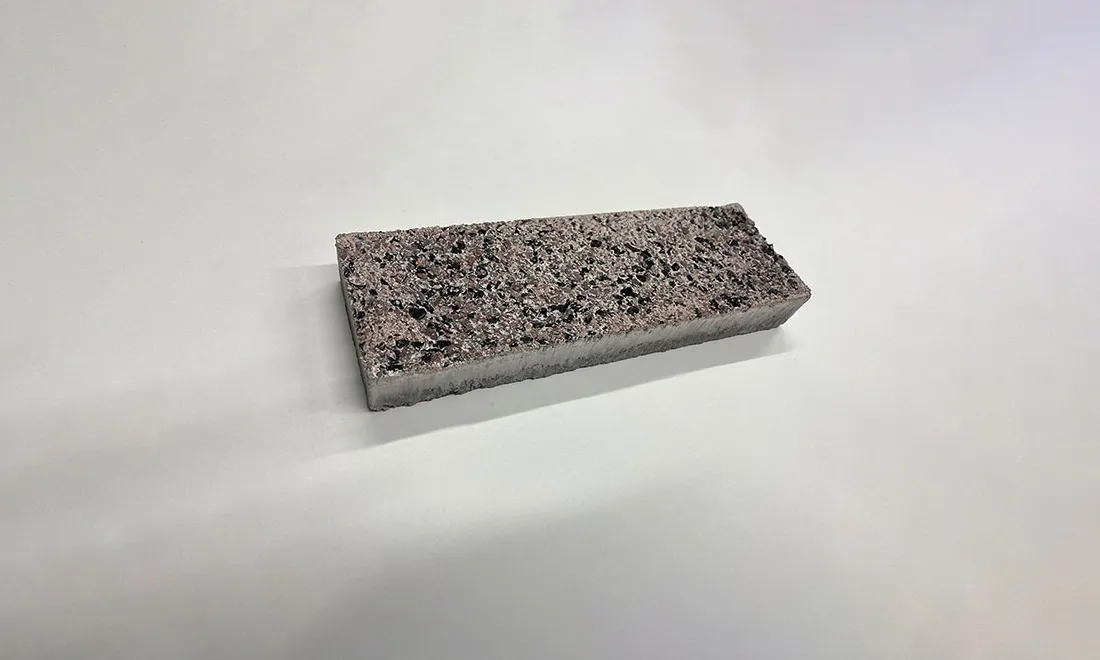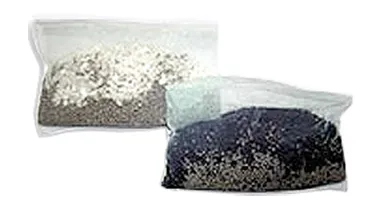
In what is being called “blue carbon,”(1) the Toyo Seikan Group is bringing “ion culture” to fishery harbors across Japan by introducing breeding ingredients that permeate the area and foster the growth of algae, which is then used to absorb CO2. As a measure directed at the acceleration of global warming, we have developed products that start to dissolve in the ocean three times faster than existing products. By putting our efforts behind the adoption of new Ion Cultures, we contribute to the decarbonization of the marine environment.
Note:
1. A term developed by the United Nations Environment Programme (UNEP) in 2009 for the absorption and storage of carbon in the marine environment through the activity of marine organisms. Given the attention shone in recent years on ways to combat global warming, marine plants such as wakame and kombu can play a vital role in this fight by using photosynthesis to absorb CO2 from the atmosphere and storing some long term.
Ion Culture is a set of glass products that gently dissolve divalent iron, silicic acid, and phosphorous ions into seawater so that the eluted nutrients can promote the growth of marine vegetation.
In a joint effort with Fudo Tetra Corporation, we have embarked on the development of glass that compensates for deficiencies of divalent ion, a cause of sea desertification(2). We made our first products from ion culture in 1993, and in 2023 we succeeded at developing ion culture with high functionality.
For conventional products, it takes about 10 years for them to completely dissolve, which poses a challenge regarding the necessary period for measuring the effects of promoting growth of seaweed. By regulating the ingredients in freshly developed products, this period can be reduced to three years, however. This has made it easier to set up demonstration trials on how much CO2 is absorbed from seaweed growth. Because the newer products triple the speed at which nutrients are eluted, they are anticipated to improve stimulated photosynthesis effects and expand the range of beneficial effects.
We plan to start sales of new products for local municipalities during FY2023, and by fostering the growth of seaweed attached to ports and the surfaces of wave-dissipating blocks serving as breakwaters, we look forward to the establishment of a blue carbon ecosystem.
Note:
2. A phenomenon that strikes the fishing industry in which stocks of Japanese abalone and other aquatic life decline following the destruction of large quantities of marine vegetation that lives in coastal areas.
Used to prepare large seaweed nurseries and fishing grounds in coastal areas
• Easy to build by mounting on a tetrapod (wave-dissipating block) in plate form
• Elutes (gradually dissolves) the necessary amount of divalent iron, silicic acid, and phosphorous ions for edible seaweeds and phytoplankton over three to ten years
• Superb durability; ability to control elution period
• Existing products in service at fishing ports and breakwaters at over 40 locations in Japan
Speed of eluting nutrients into water improved by a factor of three
* Elution period: 10 years → 3 years
Outside of Ion Culture, the Toyo Seikan Group is involved in curbing the growth of algae and moss and elution glass for copper ions that exhibit avoidance effects for organisms that attach to shellfish.
• Control algae and moss → productization as a supplementary cultivation material for greens on a golf course
• Avoid the attachment of living organisms → productization as an additive expressing an anti-fouling function when coated on a fishing net
• Ability to regulate composition ratio and particle size according to use, and to regulate the elution period and concentration


